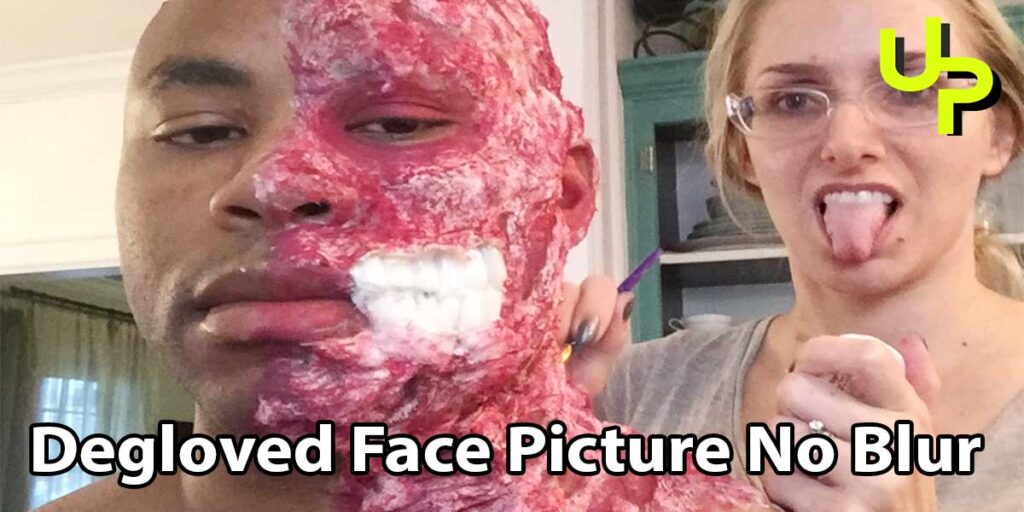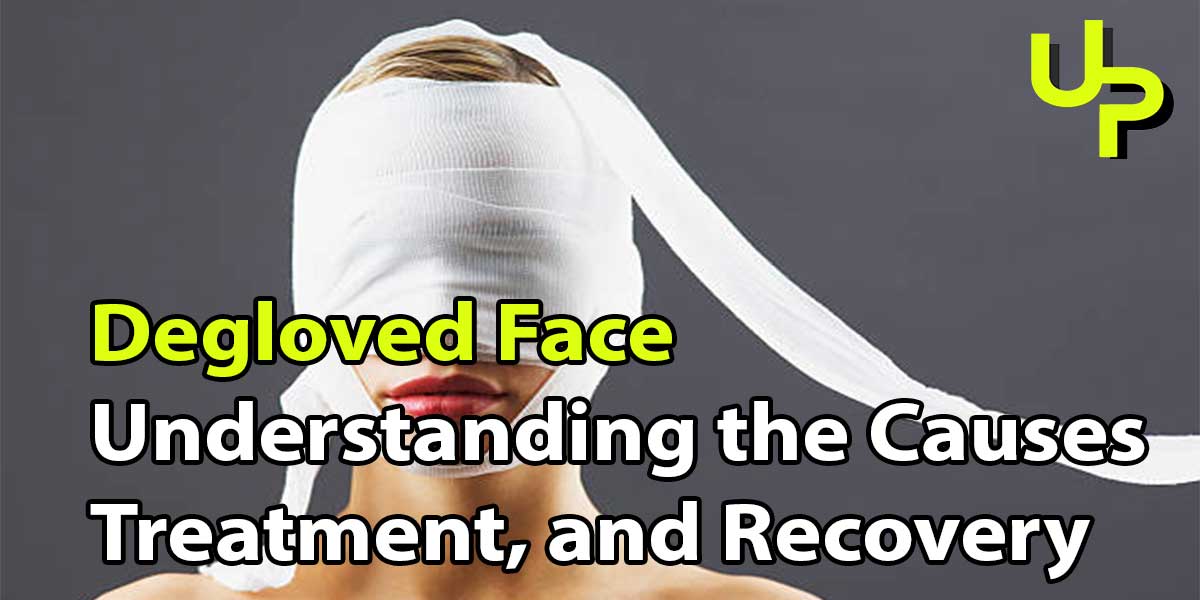A degloved face is a severe facial injury that involves the loss of skin and underlying tissue, exposing the underlying bones, muscles, and nerves. This type of injury is often the result of high-impact accidents, such as motorcycle or car accidents, industrial mishaps, or falls from heights. Understanding the causes, treatment options, and recovery process can help individuals affected by a degloved face and their loved ones navigate through this traumatic experience.
What is a Degloved Face?
A degloved face refers to a traumatic injury where the skin and soft tissue of the face are forcefully separated from the underlying structures. This separation typically occurs due to extreme external forces applied to the face, causing the skin to peel away from the muscles and bones. It is essential to note that a degloved face injury often involves extensive damage and requires immediate medical attention.
Causes of Degloving Injuries
Degloving injuries can happen in various scenarios, and some common causes include:
- Motor vehicle accidents: Collisions involving cars, motorcycles, bicycles, or pedestrians can result in significant facial trauma and degloving injuries.
- Workplace accidents: Industrial accidents, especially those involving heavy machinery or equipment, can cause severe facial injuries leading to degloving.
- Falls from heights: Accidental falls from heights, such as construction sites or stairs, can result in the forceful separation of facial tissue.
- Sports injuries: Certain high-impact sports or activities can also lead to degloving injuries, particularly when the face comes into contact with a hard surface or object.
Symptoms and Diagnosis
The symptoms of a degloved face may include:
- Visible loss of skin and soft tissue
- Exposed muscles, bones, or nerves
- Severe pain and bleeding
- Swelling and bruising
- Difficulty or pain when moving the face
A medical professional can diagnose a degloved face by conducting a thorough physical examination and reviewing the patient’s medical history. In some cases, imaging tests, such as X-rays or CT scans, may be performed to assess the extent of the injury and identify any underlying fractures or damage.
Immediate First Aid and Medical Intervention
When faced with a degloving injury, immediate first aid is crucial. Here are some steps to follow:
- Call for emergency medical assistance.
- Do not attempt to reposition or manipulate the exposed tissues.
- Control bleeding by applying gentle pressure with a clean cloth or bandage.
- Avoid applying direct pressure to the exposed bones or structures.
- Keep the injured person as calm and still as possible to prevent further damage.
Upon reaching a medical facility, the healthcare team will provide necessary interventions, including wound cleaning, pain management, and stabilization of the injury. Timely medical intervention significantly improves the chances of successful treatment and recovery.
Surgical Options for Degloved Face
Surgery plays a crucial role in treating a degloved face injury. The specific surgical techniques employed may vary depending on the severity and location of the injury. Some common surgical options include:
- Skin grafting: Healthy skin from another part of the body is transferred to the affected area to promote healing and restore the appearance.
- Tissue expansion: In cases of extensive facial tissue loss, tissue expanders may be used to stretch the nearby skin, creating a larger surface area for reconstruction.
- Microvascular surgery: This specialized technique involves reattaching blood vessels and restoring blood flow to the affected area, aiding in tissue survival and recovery.
The choice of surgical approach depends on the individual’s unique situation and the expertise of the surgical team.
Postoperative Care and Recovery
Following surgery, a comprehensive postoperative care plan is essential to optimize healing and achieve the best possible outcomes. This may include:
- Wound care: Regular cleaning and dressing changes to prevent infection and promote proper healing.
- Pain management: Medications and techniques to manage postoperative pain and discomfort.
- Physical therapy: Specialized exercises and movements to improve facial muscle strength, coordination, and range of motion.
- Nutritional support: A balanced diet rich in vitamins, minerals, and proteins to support tissue repair and recovery.
- Emotional support: Counseling, support groups, or therapy sessions to address the emotional and psychological impact of the injury.
Recovery from a degloved face injury can be a long and challenging process, requiring patience, perseverance, and support from healthcare professionals, loved ones, and the individual’s own determination.
Emotional and Psychological Support
A degloved face injury can have a significant impact on an individual’s emotional well-being. It is crucial to provide emotional and psychological support throughout the recovery journey. This may involve:
- Encouraging open communication and active listening
- Providing reassurance and empathy
- Connecting with support groups or counseling services specializing in facial trauma
- Promoting positive body image and self-esteem
Support from friends, family, and healthcare professionals can help individuals cope with emotional challenges and regain confidence as they progress through their recovery.
Rehabilitation and Physical Therapy
Rehabilitation and physical therapy are essential components of the recovery process for a degloved face injury. These therapies aim to restore facial muscle function, improve range of motion, and enhance overall facial aesthetics. A physical therapist will design a personalized rehabilitation program that may include exercises, massage, and manual techniques to help the individual regain control and mobility of their facial muscles.
Potential Complications and Long-Term Effects
While significant advancements in surgical techniques have improved outcomes for individuals with degloved face injuries, there may be potential complications and long-term effects to consider. These can include:
- Scarring and changes in facial appearance
- Limited range of motion or facial asymmetry
- Nerve damage leading to sensory or motor deficits
- Psychological and emotional challenges, such as anxiety or depression
Regular follow-up appointments with healthcare professionals and ongoing support can help address these complications and minimize their impact on the individual’s quality of life.
Preventive Measures
Preventing degloving injuries requires a proactive approach to safety. Here are some preventive measures to consider:
- Adhering to traffic laws and wearing appropriate protective gear while driving or riding motorcycles or bicycles.
- Ensuring workplace safety by using personal protective equipment and following safety guidelines and protocols.
- Maintaining a clutter-free environment to minimize the risk of falls or accidents at home or in public spaces.
- Participating in sports or high-impact activities while using proper safety equipment and adhering to the rules and regulations.
By taking preventive measures and promoting safety awareness, individuals can reduce the risk of degloving injuries and protect themselves and others from devastating consequences.
How to Support Someone with a Degloved Face
Supporting someone with a degloved face requires empathy, understanding, and patience. Here are some ways you can offer support:
- Be present and listen without judgment.
- Encourage them to express their feelings and concerns.
- Offer assistance with daily activities or appointments.
- Educate yourself about the recovery process to provide informed support.
- Avoid making insensitive comments or treating them differently due to their appearance.
Your support and understanding can make a significant difference in the affected individual’s journey toward physical and emotional recovery.
Advances in Reconstructive Surgery
Advances in reconstructive surgery have revolutionized the treatment options for degloved face injuries. From innovative surgical techniques to the use of advanced materials and technologies, these advancements have contributed to improved outcomes and enhanced aesthetic results. Ongoing research and development continue to drive progress in this field, providing hope for individuals affected by such severe facial injuries.
The Road to Healing: Real-Life Stories
Real-life stories of individuals who have experienced a degloved face injury and successfully recovered can inspire and offer hope to others facing similar challenges. These stories highlight the resilience, strength, and determination of individuals as they navigate the difficult journey of healing and rebuilding their lives after a traumatic facial injury.
Degloved Face Picture No Blur

Conclusion
A degloved face injury is a severe and traumatic event that requires immediate medical attention and comprehensive treatment. Understanding the causes, treatment options, and recovery process is crucial for both individuals affected by a degloved face and their support networks. By providing the right medical care, emotional support, and rehabilitation, individuals can embark on a path toward healing and restoration.
FAQs (Frequently Asked Questions)
1. How long does it take to recover from a degloved face injury?
The recovery time can vary depending on the severity of the injury and the individual’s overall health. It may take several months to a year or more for a complete recovery.
2. Will the face look the same after treatment?
While reconstructive surgery aims to restore facial aesthetics, it is important to note that there may be some changes in appearance. Scarring and slight asymmetry may be present, but the goal is to achieve the best possible outcome.
3. Are degloved face injuries preventable?
While accidents can happen, many degloving injuries can be prevented by following safety guidelines, wearing appropriate protective gear, and maintaining a safe environment.
4. Can physical therapy help with the recovery of facial muscle function?
Yes, physical therapy plays a vital role in rehabilitating facial muscles and restoring their function. A physical therapist can design a personalized program to aid in recovery.
5. Where can I find support groups for individuals with degloved face injuries?
There are various online support groups, counseling services, and organizations dedicated to helping individuals with facial trauma. Consult with healthcare professionals or search online for resources specific to your location.
6. How Does a Degloved Face Happen?
A degloved face injury occurs when the skin and soft tissue of the face are forcefully separated from the underlying structures. This typically happens due to high-impact accidents such as car crashes, industrial mishaps, falls from heights, or sports injuries. The extreme external forces applied to the face cause the skin to peel away, exposing the muscles, bones, and nerves beneath.
7. What Does a Degloved Face Look Like
A degloved face appears with visible loss of skin and soft tissue, exposing the underlying muscles, bones, and nerves. It may exhibit severe swelling, bruising, bleeding, and difficulty or pain when moving the face. The exposed area lacks normal skin coverage and can have a raw, exposed appearance.
